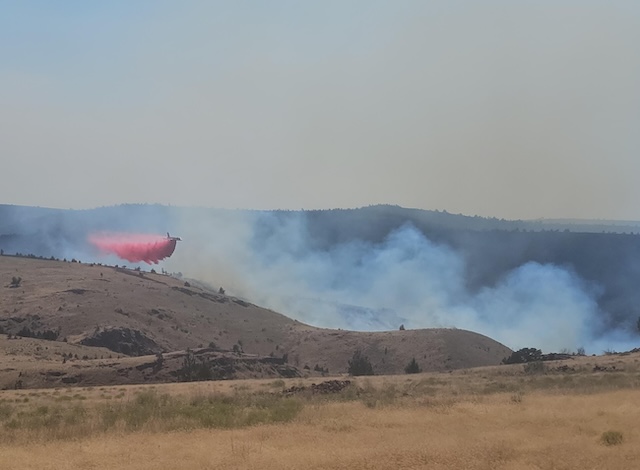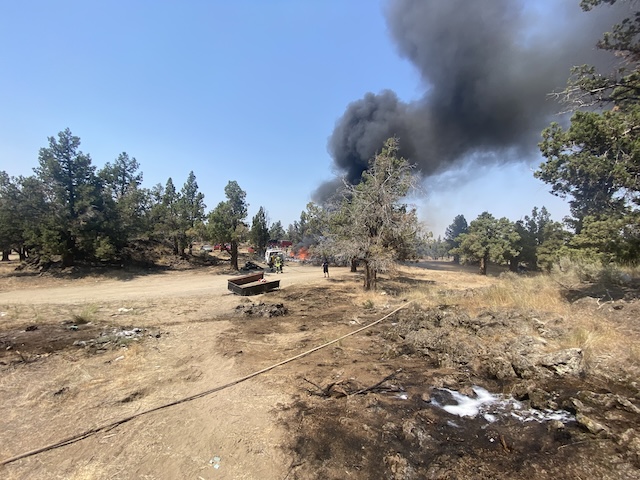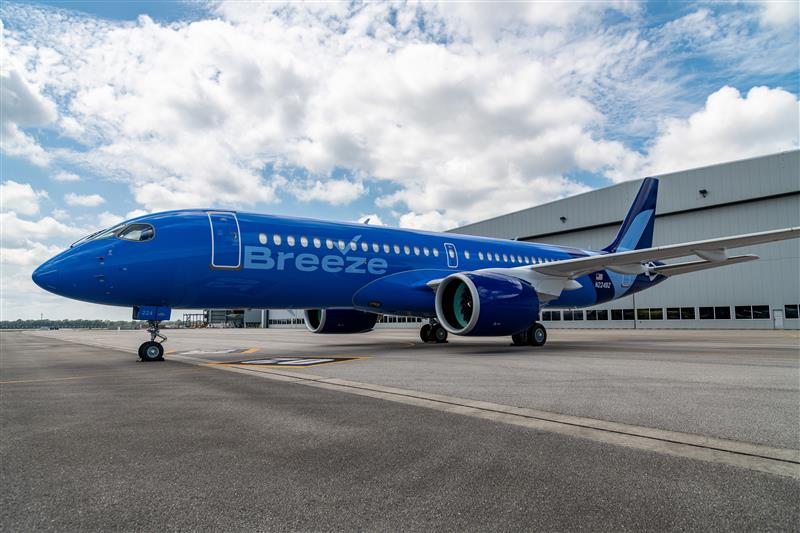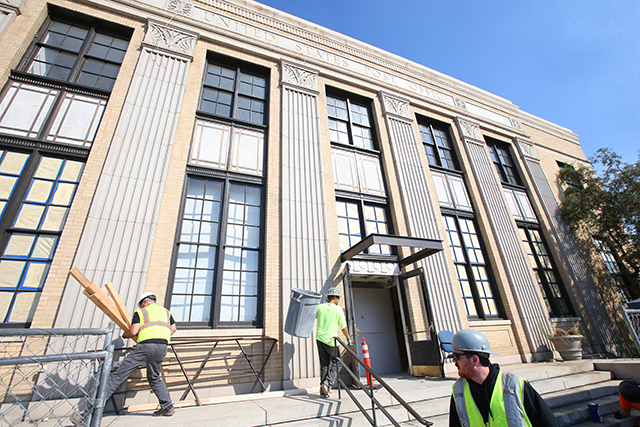Trains rarely spark fires in Central Oregon, even in fire season
Published 5:45 am Thursday, August 15, 2024
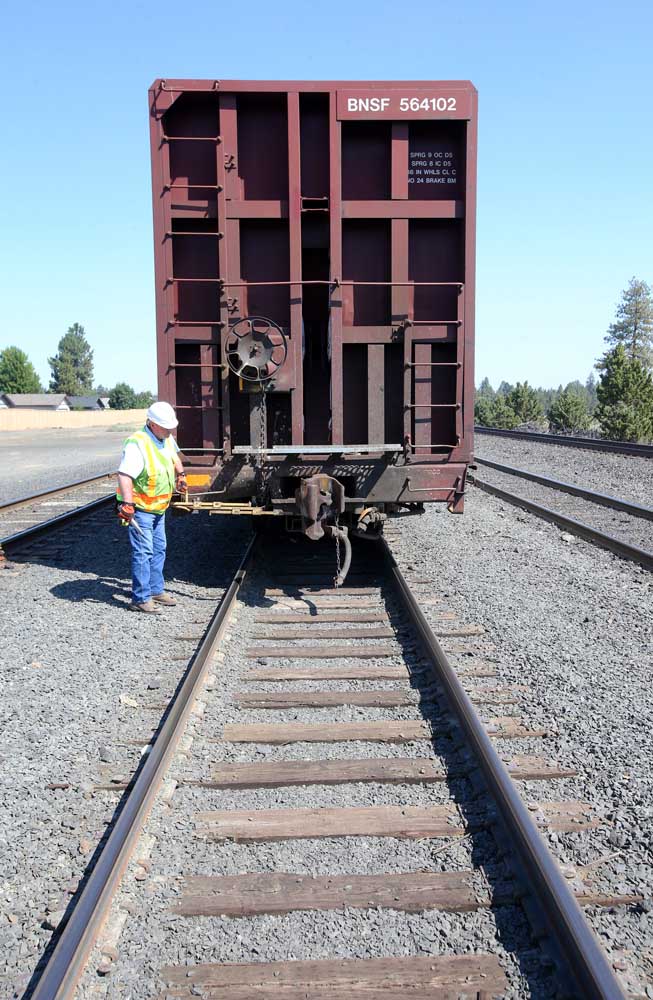
- Inspector Greg Stang, who works for Oregon Department of Transportation rail safety, checks a freight car uncoupling lever to make sure it works correctly, in the Cascan railroad yard in Bend Wednesday morning.
While three fires were sparked by trains in Central Oregon’s dry brush this summer, train-caused fires are rare — and actively being prevented.
Trains and railroads, such as Burlington Northern Santa Fe Railway, which carries cars through Central Oregon, undergo inspections and maintenance often throughout the year, regardless of the season. And, trains are often equipped with fire prevention tools.
Trending
There have been three fires started by trains in Central Oregon in the past few months, in Bend, Redmond and Culver, according to Bend Fire & Rescue Deputy Fire Marshal Dan Derlacki and Jefferson County Fire & EMS Fire Chief Jeff Blake.
Two brush fires on June 23, one in Bend and another in Redmond, were due to locked-up brakes that spewed sparks from the train into nearby brush, authorities said at the time. BNSF railroad employees stopped the train and removed the car for repairs almost immediately, said Blake.
“The railroads do a good job of trying to mitigate what they can,” Blake said. “I don’t see it as a bigger risk than anything else…anybody can drag a chain or drag something or drive off the road or do whatever and cause a fire in some instance.”
Blake has worked in the fire service for over 30 years, and he said trains don’t cause fires often, but like any operating equipment, can overheat or malfunction.
Nearly anything has the potential to spark a fire, from cars to weed eaters to dragging a chain across the road, said Derlacki.
But while cars, which can easily spark fires when parked over dry grasses, are rarely inspected, trains get regular inspections for safety and fire risk.
Trending
Train inspections
For almost 46 years, Greg Stang has shined his flashlight underneath train cars and rattled metal parts to inspect brakes and engines. He circles the sides of each car checking to ensure they’re up to code.
Stang, an inspector for Oregon Department of Transportation, is one of many inspectors out on any given day in rail yards.
If any part of the train is defective, inspectors and maintenance crews will pull it out of service. Before trains go on the tracks, they are carefully inspected in partnership with BNSF, said ODOT Director of Communications Shelley Snow.
“Our motto in rail safety is the work that we do is work aimed at preventing any of these unfortunate things happening, things like derailments,” Snow said.
BNSF is committed to reducing the risk of fires, said BNSF Director of External Communications Kendall Sloan in an email.
“We conduct thorough risk assessments that consider factors such as vegetation type, rainfall, relative humidity, temperature, wind speed/direction, time-of-day of work activities and type and extent of work activities.”
Train engineering
In Central Oregon, many train tracks wind through dry brush in hot weather conditions, and trains reach speeds up to 50 miles per hour.
“(Fires) certainly can become much more prevalent during the summertime because of the hot, dry, weeds and grasses that we have near the track,” Blake said. “If the train were to have a problem, it would spike during the summertime.”
If there’s an area of track that seems concerning, fire departments will notify the railroad so they can clean it up, Derlacki said.
Trains can start spewing sparks from malfunctioning parts including cast iron brakes, which are rarely used now. These brakes can wear down, split and break off, which leads to metal-on-metal friction creating heat.
Trains also carry water cars, which can carry up to 30,000 gallons of water. This allows crews to proactively spray water on and around tracks. Water cars are pre-staged in areas prone to fire
”They’ll shoot out water, so that waters everything down just to be on the safe side,” Stang said.
BNSF works closely with local fire agencies during fire season. In addition, railroads tend to keep equipment up to date, Stang said.
However, some trains still have older engines, which can build up carbon and shoot hot pieces out exhaust stacks, said Stang, though it’s unlikely to occur. These types of engines are inspected every 94 days. Newer engines, which are now in the majority, can wait up to 184 days between inspections.
Blake said train inspectors do a great job of trimming weeds and brush near the tracks. However, sparks can shoot up to 20 yards out, so trimming brush doesn’t completely solve the problem.
Some trains are equipped with spark arrestors, which act as caps on exhaust stacks to keep sparks from flying where they aren’t welcome, said Stang.
Derlacki said tracks also have automatic sensors that can tell when wheels are heating up more than usual.
“If there’s one wheel that is three times more hot, that system will alert their operations,” Derlacki said.
Fires in action
When trains do start fires, they’re usually extinguished quickly, if the local fire department and railroad company are contacted quickly.
In the fire near Culver on July 8, three small individual brush fires began shortly after a train ran through the area. Smoke was visible within minutes. When a train is a suspected cause of the fire, the fire department will contact the railroad department, in this case BNSF, to notify them of the train’s malfunction.
This time, BNSF stopped the train and a BNSF crew was there almost immediately, said Blake. A fire crew was able to put out the brush fires quickly.
From there, a BNSF truck monitored the train on the rest of its route.


